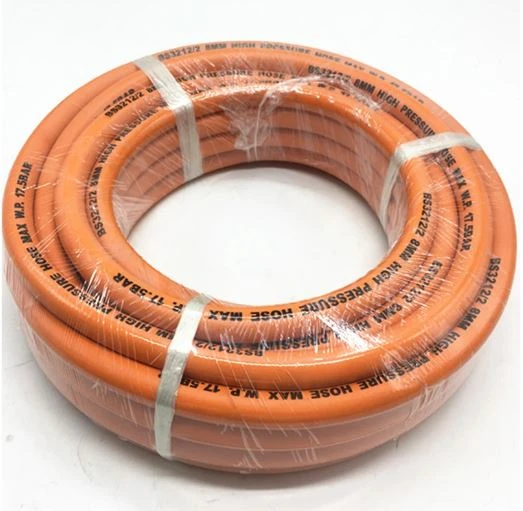pvc vs rubber vs polyurethane air hose
When it comes to choosing the right air hose for your pneumatic needs, understanding the differences between PVC, rubber, and polyurethane hoses is crucial. Each type of material comes with its own set of advantages and disadvantages that can significantly affect performance, durability, and flexibility.
When it comes to choosing the right air hose for your pneumatic needs, understanding the differences between PVC, rubber, and polyurethane hoses is crucial
. Each type of material comes with its own set of advantages and disadvantages that can significantly affect performance, durability, and flexibility.Rubber Air Hoses Rubber air hoses are considered to be some of the toughest and most durable options available on the market. They are designed to withstand extreme temperatures, both hot and cold, without losing flexibility. This makes rubber hoses ideal for heavy-duty applications, such as in automotive shops or construction sites, where they are frequently exposed to rough conditions and extensive wear and tear. Additionally, rubber hoses are often resistant to various chemicals and oils, making them suitable for diverse applications. However, rubber hoses tend to be heavier and more expensive than PVC, which might be a consideration for users who require mobility and cost-effectiveness.
pvc vs rubber vs polyurethane air hose

Polyurethane Air Hoses Polyurethane hoses are praised for their remarkable flexibility and lightweight nature. They are ideal for applications that require frequent movement or tight bending, as they can easily maneuver around obstacles without kinking. This flexibility also makes them a favorite among professionals who work with pneumatic tools that require precision and ease of handling. Polyurethane hoses are also resistant to abrasion, oils, and chemicals, which enhances their durability. They perform well in both hot and cold temperatures, maintaining their flexibility across a broader temperature range compared to PVC. However, polyurethane hoses can be more expensive than both PVC and rubber hoses, which could be a limiting factor for budget-conscious buyers.
Choosing the Right Hose The decision of which air hose to choose ultimately depends on the specific requirements of your project or application. If you need a budget-friendly and lightweight option for occasional tasks, a PVC air hose may suffice. For rigorous, heavy-duty applications where durability and flexibility are paramount, rubber air hoses are the best bet. On the other hand, if you require a hose that combines flexibility, lightweight design, and chemical resistance for various applications, polyurethane would be the way to go.
In conclusion, each type of air hose—PVC, rubber, and polyurethane—has its own strengths and weaknesses. By assessing your specific requirements and considering factors such as mobility, temperature tolerance, durability, and cost, you can make a more informed decision that will lead to better performance and satisfaction in your pneumatic tasks. Whether you are a weekend DIY enthusiast or a professional in need of reliable equipment, understanding these materials can greatly enhance your experience with air hoses.
-
Top Quality Oxy Acetylene Hoses for Sale Fit for Welding DemandsNewsJul.28,2025
-
The Future of Pneumatic Air Tubes in IndustryNewsJul.28,2025
-
Superior and Reliable LPG Hose Pipe Solutions for Every NeedNewsJul.28,2025
-
Exceptionally Durable and Versatile Premium Braided PVC TubingNewsJul.28,2025
-
Best Adapters for Connecting Garden Hose to PVC Pipe ConnectionsNewsJul.28,2025
-
The Essential Role of LPG Hoses in Safe and Efficient Gas DistributionNewsJul.16,2025














